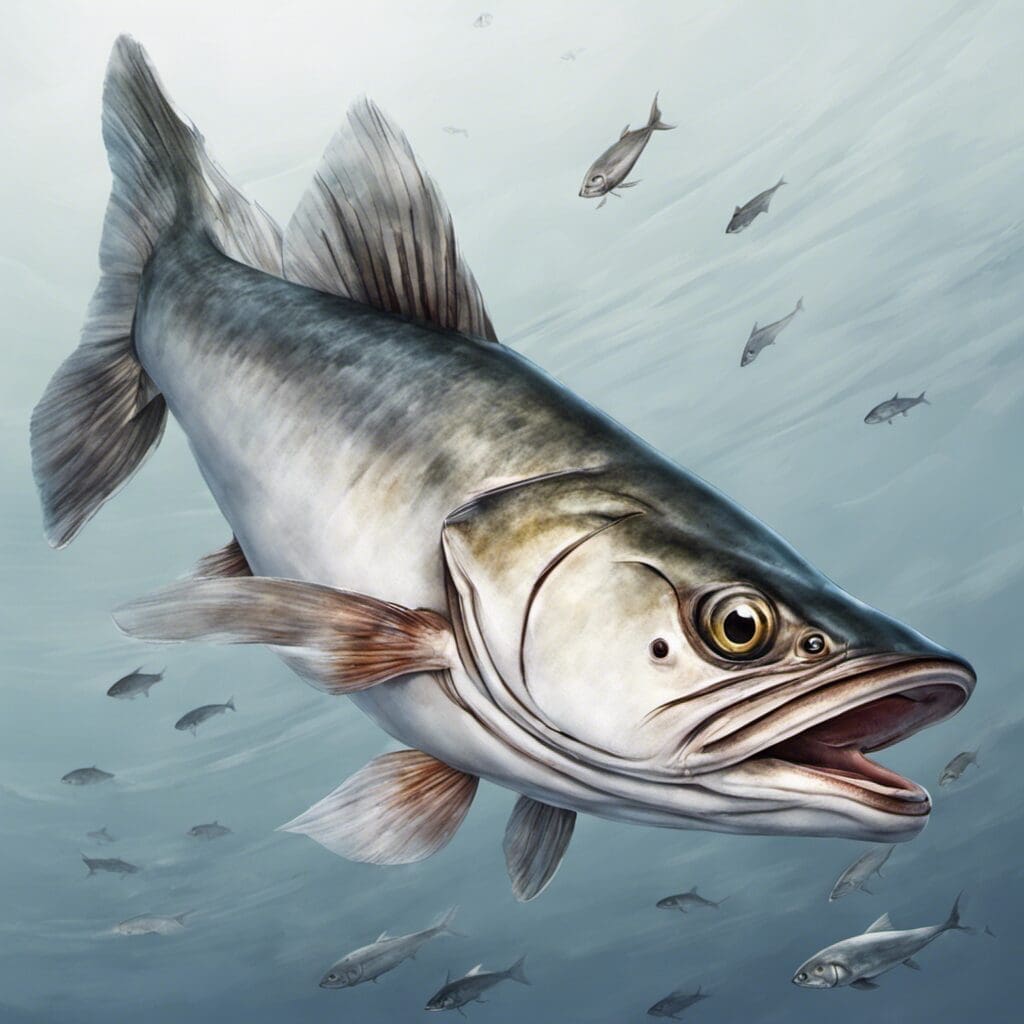Introduction
The white hake (Urophycis tenuis) belongs to the family Gadidae, more commonly known as the cod family. This long, slender fish is indigenous to the North American Atlantic coast and rumored to possess a mild, sweet flavor, adding interest to its fishing appeal.
Conservation Status
The current conservation status of the white hake falls into the category of “Least Concern.” This favorable classification is due, in large part, to the ongoing conservation efforts aimed at managing commercial and recreational fishing quotas. This helps to ensure that the population levels remain robust.
Statistics
| Statistic | Average | Range |
|---|---|---|
| Length | 24 inches | 14-42 inches |
| Weight | 4 lbs | 1-10 lbs |
| Average Lifespan | 14 years | 10-20 years |
Distribution
The white hake is typically found along the North Atlantic coasts of North America and Europe. They’re widely seen in oceanic waters, from Newfoundland to North Carolina. This species does not exhibit recognized migration patterns.
Habitats
White hake is found in both brackish and saltwater environments. Their depth ranges from 18 to 1300 meters, with temperature variations matching the seasonal shifts in their preferred habitats.
When and Where to See
White hakes can be observed all year round but are more plentiful during the late spring and early summer seasons. They tend to be most active during twilight hours – both dawn and dusk.
Best Fishing Locations
White hake is most commonly found in the following locations:
- The Gulf of Maine
- Georges Bank
- Southern New England
- Mid-Atlantic coast
If a specific location isn’t known, look for deep water areas with sandy or muddy bottoms, as those are their preferred habitats.
How to Catch
The preferred bait for white hake includes small fish and squid. Bottom fishing and deep-sea fishing are the best techniques to catch them. Fishing is most productive during twilight hours and during the warmer months of the year.
Identification Guide
White hake has a grayish to brownish color on the dorsal side and a slightly lighter color on the ventral side. A conspicuous barbel is present on the chin, whereas a longitudinal dark line runs along their side. The fish is biologically distinct from other hake species due to the lack of a dorsal spine.
Culinary
White hake has a mild, sweet flavor with a medium-firm texture, often compared to cod or haddock. It is widely used in a variety of dishes, including fish and chips, chowders, and baked dishes. The fish is rich in proteins, vitamins, and omega-3 fatty acids.
Additional Information
White hakes feed on small fish, squids, and crustaceans, among other sea animals. The species has a unique mating ritual, with males producing drumming sounds to attract females. Their known natural predators include seals, larger fish, and humans.
Though there are no specific myths, folklore, or historical events connected to white hake, the species holds significant economic value in areas where commercial fishing is prevalent.
References and Further Reading
Further information on white hake can be retrieved from the following sources:
- NOAA Fisheries
- FishSource
- Massachusetts Government

